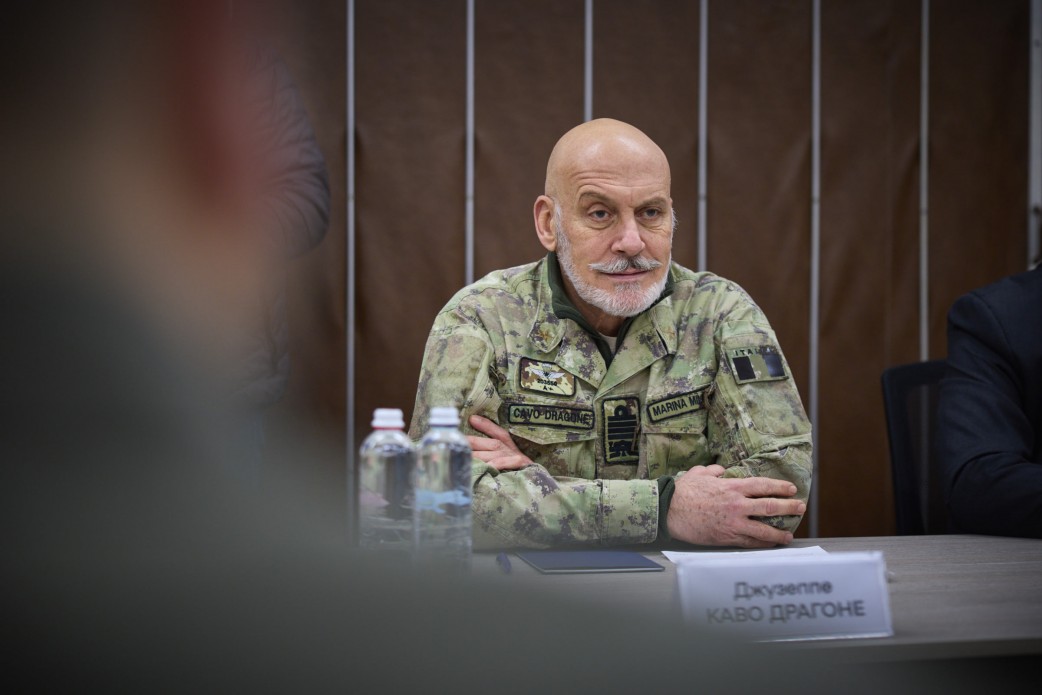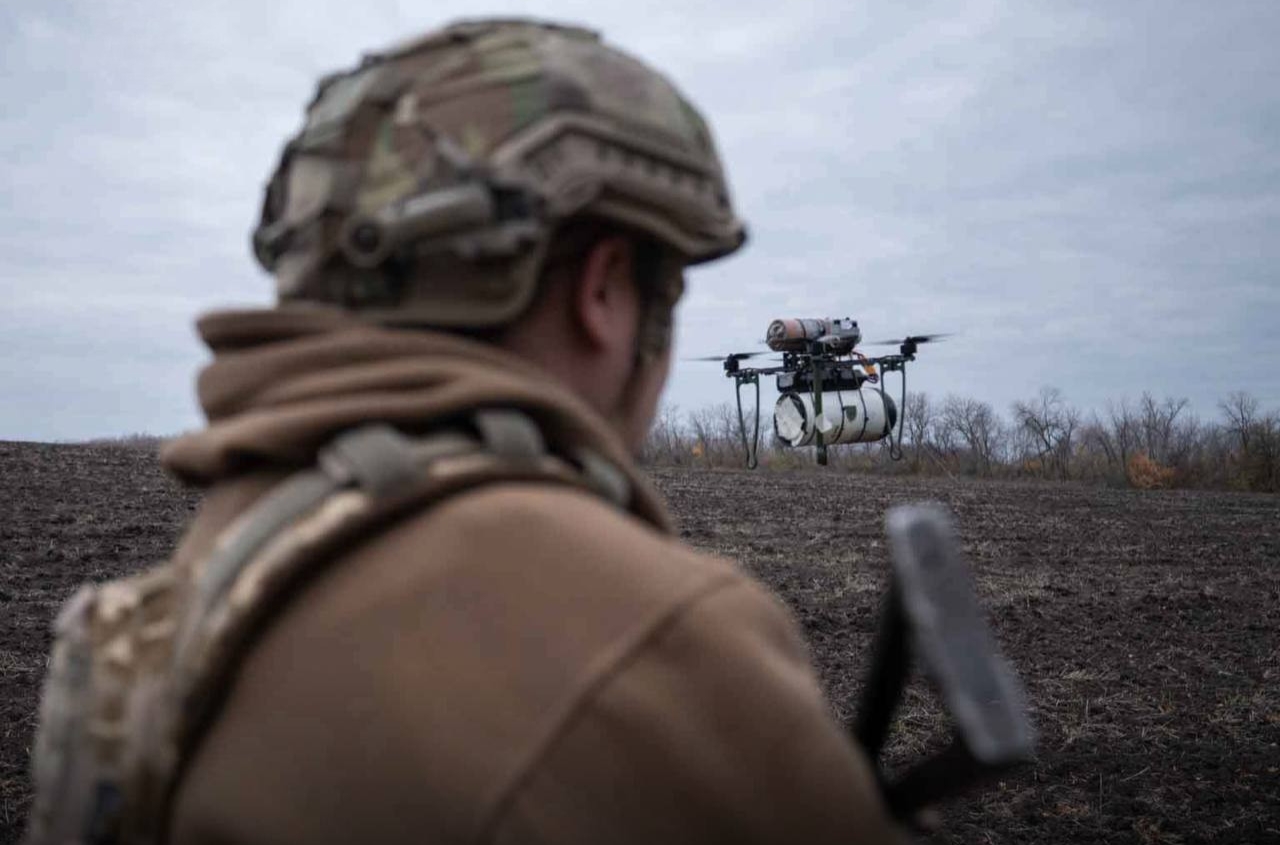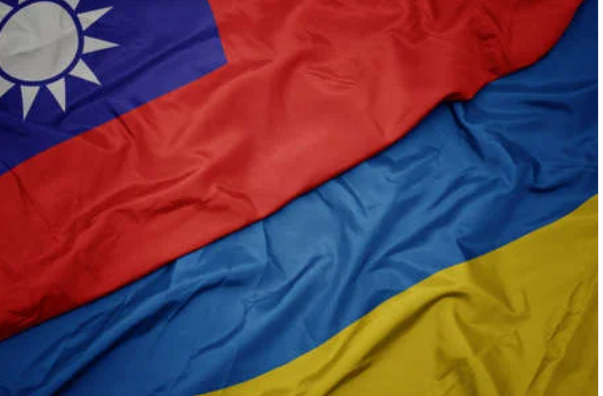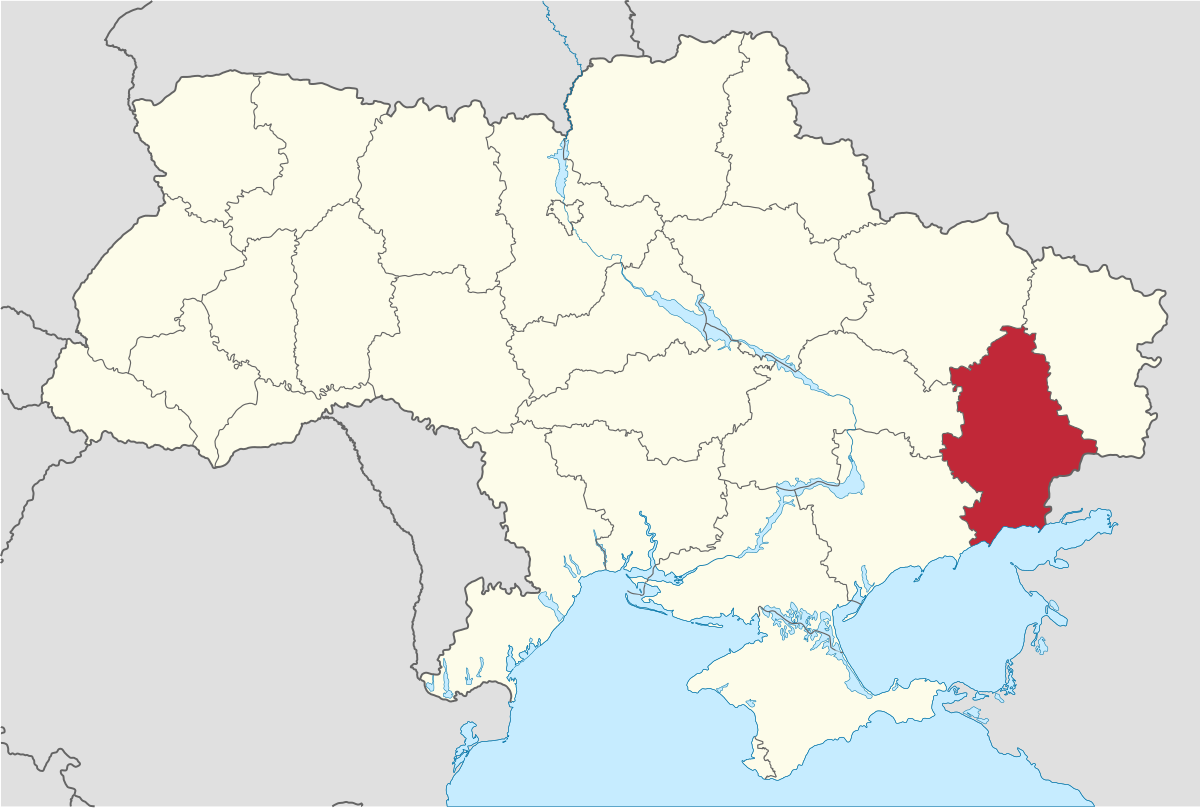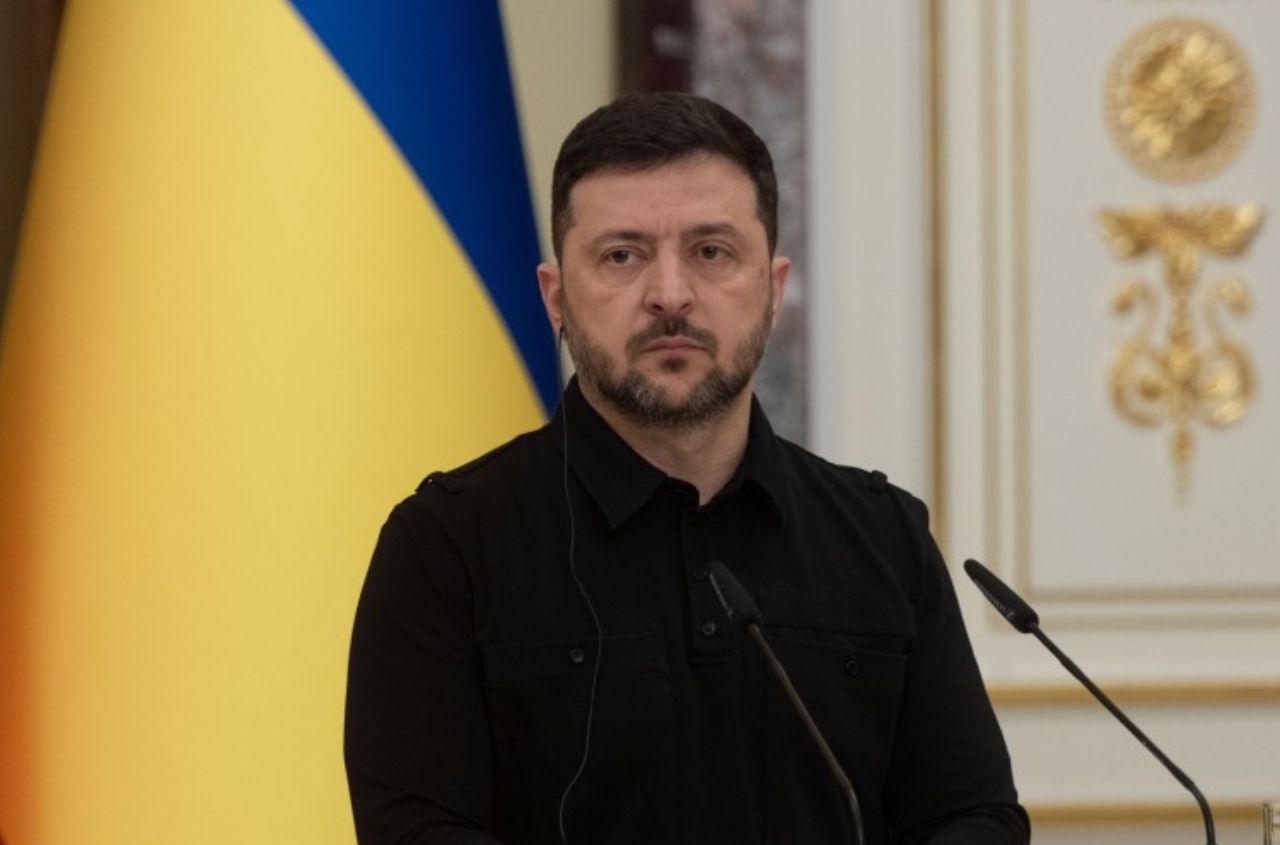Last week, Ukraine was visited by the highest-ranking military leader of the North Atlantic Alliance – NATO Military Committee Chairman Admiral Giuseppe Cavo Dragone.
He took up the position only three weeks ago, and his first foreign visit was to Ukraine. This serves as a clear signal that NATO will play an increasingly prominent role in coordinating and supplying military aid to Ukraine, particularly through the new structure in Wiesbaden.
During his meeting with Ukrainian political and military leaders, Admiral Dragone discussed the needs of Ukraine's defense forces and security sector reforms, while also gaining firsthand insight into the capabilities of Ukrainian long-range weapons.
In an exclusive interview with ArmyInform, Admiral Giuseppe Cavo Dragone shared his views on the urgent needs of the Ukrainian Armed Forces, assessed Ukraine's strikes on Russian military targets, and discussed the likelihood of peace negotiations to resolve the war.
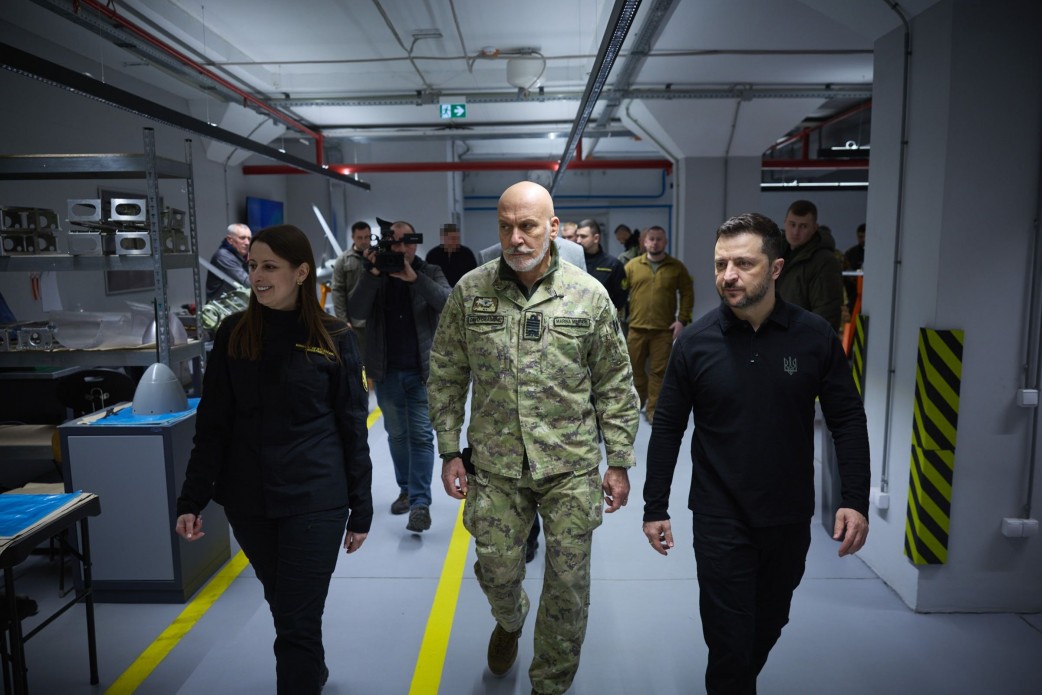
— What will your priorities be as Chairman of the NATO Military Committee, and what key challenges do you face?
— As Chairman of the NATO Military Committee, my priority will be ensuring continued support for Ukraine, enabling it to be in the strongest position, while maintaining NATO's readiness to deter any threats to the Alliance's territory.
The situation on the battlefield remains complex: Ukraine is holding part of the Kursk region while dealing with constant Russian offensives and airstrikes on its energy infrastructure.
Among the current key tasks is maintaining NATO's strong support for Ukraine, countering hybrid threats such as cyberattacks and sabotage, and ensuring NATO's strong defense capabilities. Russia's reliance on support from North Korea, Iran, and China highlights the global nature of the threats we face. Therefore, strengthening NATO's deterrence capabilities, especially on the eastern flank, and increasing defense production are critical.
We are adapting to ensure our ability to deter and defend against a wide and evolving range of threats, including in the context of “gray zone” tactics or hybrid warfare with destabilizing objectives. These threats include international terrorism, terrorist groups, challenges from the South, and issues in the Arctic, all of which require a comprehensive security approach.
— What do you see as the key challenges in supporting Ukraine's defense capabilities?
— The primary challenge is ensuring a continuous and predictable supply of military aid, including ammunition, air defense systems, and long-range strike capabilities. Ukraine's defense forces intercept Russian missiles and drones daily, but stockpiles of air defense systems need replenishment.
Another key challenge is Russia's constant pressure on multiple fronts. Since February 2022, over 700,000 Russian soldiers have been killed or wounded. The involvement of North Korean forces is a dangerous development, highlighting Putin's reliance on external powers.
Russia's attacks on Ukraine's infrastructure are also weakening its defense production and energy sector. This is why, at last year's Washington summit, NATO members agreed on a strong package of long-term support for Ukraine:
- Creation of the NATO Security Assistance and Support Program for Ukraine (NSATU), which coordinates and provides most of the international security aid to Ukraine. NSATU's headquarters is in Wiesbaden, Germany, with logistical centers in eastern parts of the Alliance.
- A financial commitment to provide a minimum base of €40 billion in military assistance to Ukraine, with plans to review this amount at future summits.
- Further steps toward NATO-Ukraine integration on its irreversible path to membership, including the establishment of the NATO-Ukraine Joint Analysis, Training, and Education Center (JATEC).
- Appointment of a NATO special representative in Ukraine.
— What are the most important types of military aid that NATO and its members should prioritize for Ukraine?
— NATO members are firmly committed to further strengthening Ukraine's defense capabilities, and we welcome any announcements about providing additional military support. We saw excellent examples at the recent "Ramstein" meeting from the USA, Canada, Latvia, the UK, and others.
We clearly see that Ukraine needs modern air defense systems, capabilities for precision long-range strikes, and an increase in artillery and ammunition supplies.Given the ongoing missile and drone attacks from Russia, NATO and its members must provide Ukraine with adequate air defense to protect its infrastructure.
Ukraine also needs steady supplies of 155mm artillery shells, armored vehicles, and long-range weapons to strike Russian military targets. To strengthen long-term resilience, NATO must support Ukraine's development of its internal defense production.
— Six months ago, Ukraine received its first F-16 fighters from partners. How does NATO assess their effectiveness?
— The F-16s in Ukraine's Air Force have strengthened its ability to counter Russian aerial threats, intercept enemy aircraft, and carry out effective strikes on military targets.
These aircraft are especially valuable against missile and drone attacks. However, their full impact on the frontlines depends on adequate pilot training, maintenance capabilities, and continuous supply of weapons and spare parts. NATO is assisting with pilot and technical staff training, as well as logistical support, to ensure the maximum effectiveness of these aircraft.
— How do Ukraine's strikes on Russian military sites affect Russia's ability to continue the war?
— Ukraine's strikes on Russian military sites are a legitimate form of self-defense under international law. These attacks undermine Russian logistics, weaken its ability to conduct further offensives, and force Moscow to divert more resources to its own defense. Although these strikes alone cannot end the war, they cause significant damage to Russia, targeting fuel depots, airbases, and ammunition stockpiles.
Russia's increasing battlefield losses, combined with mounting pressure on its defense industry, are gradually degrading its long-term military capabilities.
— How long, according to NATO, can Russia continue its war against Ukraine? What are Russia's losses?
— Since February 2022, Russia has lost over 700,000 soldiers killed or wounded. Thousands of tanks, armored vehicles, and aircraft have been destroyed, and Russia's navy has been pushed out of most of the Black Sea.
Despite these losses, Russia continues the war with support from North Korea, Iran, and China. However, in the long term, Russia will struggle to ignore such high levels of loss. Continued military support for Ukraine will further degrade Russia's military capacity and place Ukraine in a stronger position during negotiations. We must focus on supporting the end of the war to ensure that Ukraine can enter any negotiations from a position of strength.
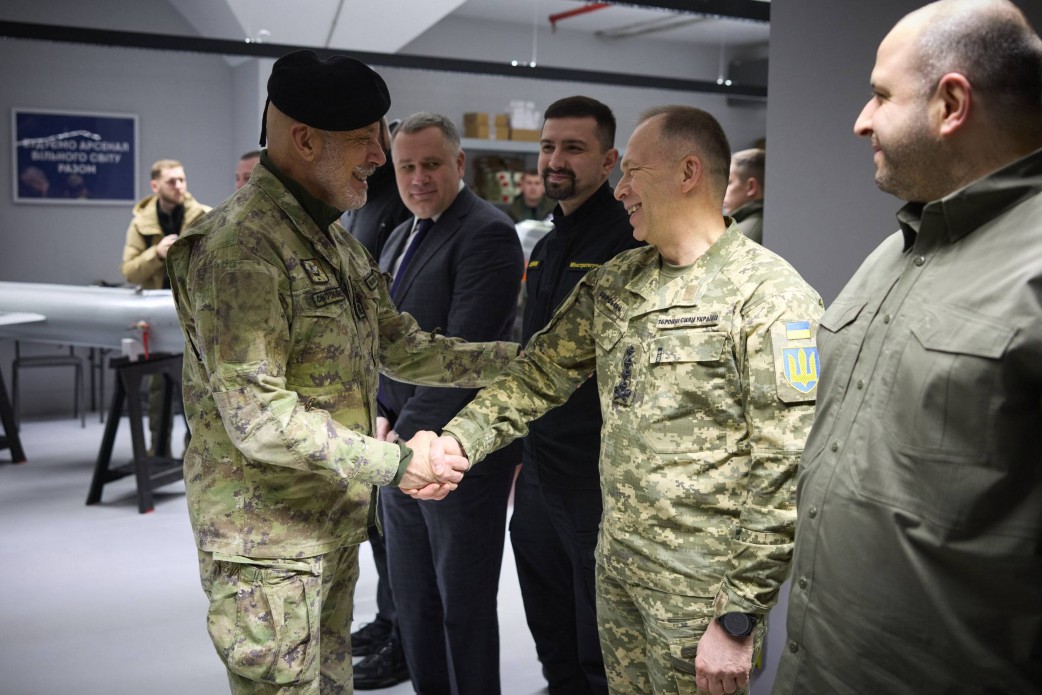
— Have North Korean soldiers been involved in the war against Ukraine since the beginning of this year? How can we stop North Korea from continuing to support Russia?
— North Korea is supplying Russia with ammunition, missiles, and even personnel. This is a significant threat, allowing Russia to replenish its supplies amid heavy losses. It also represents another violation of UN Security Council resolutions and a dangerous expansion of Russia's war.
NATO has called for both Russia and North Korea to immediately cease these actions. Stopping North Korea's involvement requires strengthening sanctions, increasing diplomatic pressure on China, and intercepting arms supplies through intelligence and naval cooperation.
Strengthening deterrence measures against North Korea is essential to prevent further military cooperation with Russia.
— What could NATO's role be if some member countries decide to participate in a peacekeeping mission in Ukraine?
— We recommend focusing on enhancing support for Ukraine to ensure it is in the strongest possible position when it sits down at the negotiating table for a peaceful resolution of the conflict.
The discussion on what happens next will depend on how strong Ukraine's position is at the negotiation table and how much Ukraine can independently determine the outcome on its own terms after peace talks.
NATO continues to focus on strengthening Ukraine's military capability, rather than deploying peacekeeping forces in active combat zones.
— Russia has made statements about a supposed willingness to negotiate, but with the condition that Ukraine cannot be a NATO member. Should we start negotiations with such demands?
— Ukraine has the exclusive right to set the terms for any peace talks. NATO fully supports Ukraine's sovereignty and rejects any conditions that would force Ukraine to give up its future security.
History shows that ceasefires with Russia do not guarantee lasting peace. The best way to bring Russia to the negotiating table on favorable terms is to ensure that Ukraine remains strong militarily.
Moreover, Ukraine's path to NATO membership is irreversible, as confirmed at the Washington summit.
— If the new U.S. administration reduces military assistance to Ukraine, is NATO ready to compensate for it?
— At the Washington summit, NATO committed to long-term support for Ukraine, with member states promising to allocate at least €40 billion for security assistance through 2024.
In December, the NATO Security Assistance and Support Program for Ukraine (NSATU) was launched. I won’t speculate on potential changes in U.S. policy, but NATO is working to ensure that support is evenly distributed and consistent.
The creation of NSATU demonstrates NATO's commitment to long-term support, regardless of political changes in individual member countries. Ukraine's security is our security, and we remain steadfast in our support.









